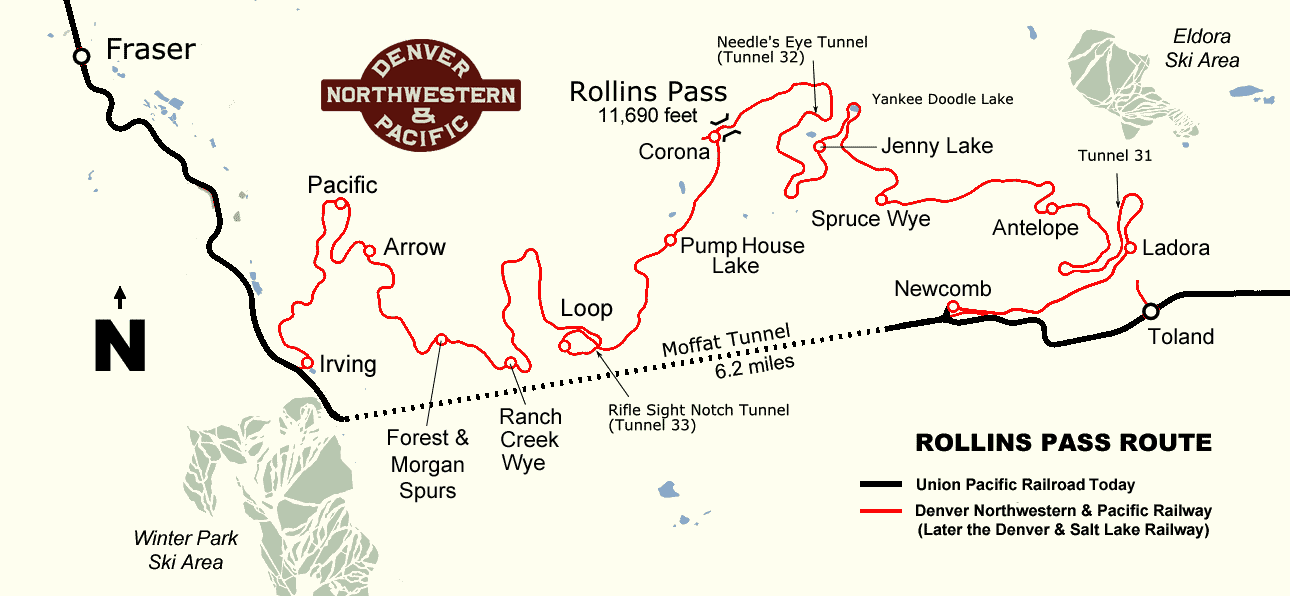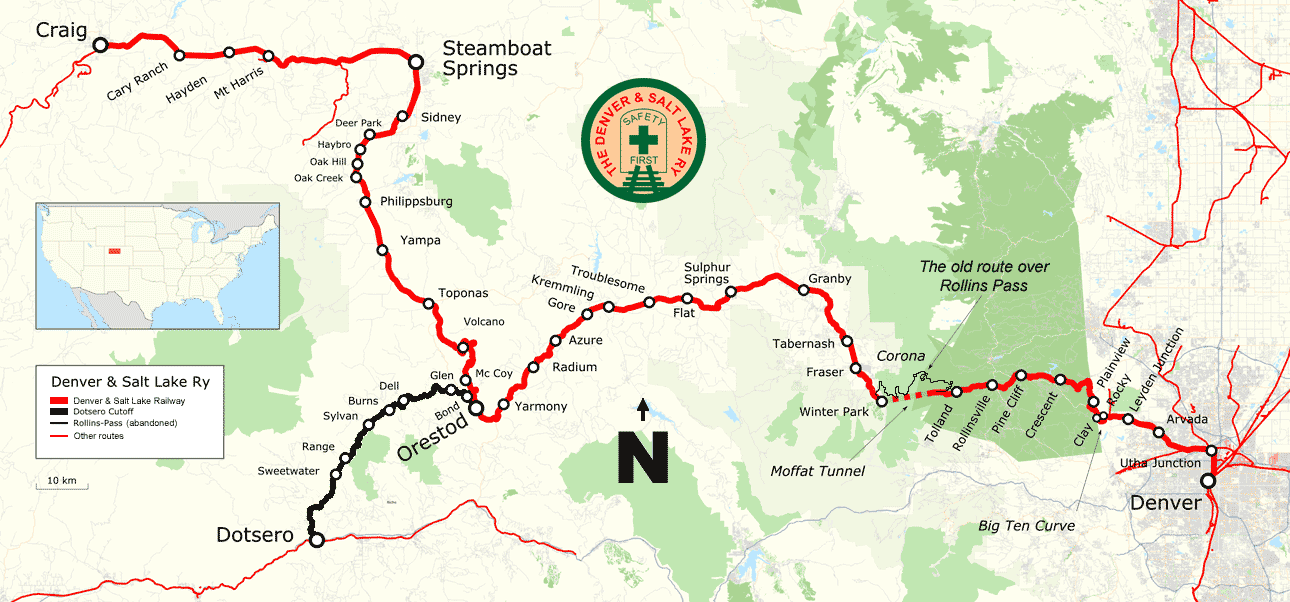
Denver, Colorado, lies just to the east of the formidable barrier of the Rocky Mountain Front Range. In the late 1800's travel westwards from Denver involved a long circuitous route south to Pueblo then northwards up the Arkansas River valley to reach the Colorado River and continue west towards Salt Lake. The desire for westward travel drove the desire for a more direct route west.
In 1902 the Denver Northwestern & Pacific Railway (DN&P) was incorporated by David H. Moffat and six other gentlemen. Their goal was to build a railway from Denver to Salt Lake, Utah. Construction began almost immediately with the right-of-way proceeding north up the face of the Front Range. To keep the grade from exceeding 2 percent enroute to Boulder Canyon 8 tunnels and the Big Ten curve were created. Moffat realized that a tunnel was necessary to breach the Front Range barrier but funds were not available for such an expensive initial venture. This necessitated the decision to cross the Continiental Divide over Rollins Pass at an elevation of 11,690 feet. Using switchbacks, tunnels, and loops a grade of 4 percent was constructed up to Corona at the summit of the pass, the highest railroad in America at that time.
The summit station, named Corona, was protected by a long wooden snow shed including a lunch room within the shed. Buildings for the workers and a heating plant were constructed to survive the freezing winters. Train lengths being limited by the steep grade it seems likely that dining cars were not practicable along the route hence the need for a restaurant here, and also at Arrow, further to the west.
including a lunch room within the shed. Buildings for the workers and a heating plant were constructed to survive the freezing winters. Train lengths being limited by the steep grade it seems likely that dining cars were not practicable along the route hence the need for a restaurant here, and also at Arrow, further to the west.
By 1905 railway construction had surmounted the pass reaching as far west as Fraser. Continuing west the line construction passed through Granby, Hot Sulphur Springs, Byers Canyon, and State Bridge, arriving at Steamboat Springs in 1909. While raising funds for the DN&P David Moffat died at New York City in 1911. Even so the railway continued and by 1913 the line had reached Craig. Although not considered then, Craig turned out to be the end of the line for the DN&P.
1913 was also the final year for the DN&P. It was bankrupt. The company was re-organized as the Denver & Salt Lake Railway (D&SL) so traffic over Rollins Pass continued up to 1928. On 26 Feb 1928 the D&SL took possession of the Moffat Tunnel, named for their diseased president, David H. Moffat. Drilled 6.2 miles under the Front Range near Newcomb to Winter Park trains were no longer required to climb over Rollins Pass and line fell out of use.
Now the Denver & Rio Grande Western (DRGW) entered the picture. It acquired the D&SL for the purpose of connecting the D&SL near Bond with its line at Dotsero on the Colorado River. By 1934 the DRGW had completed the nearly 40 mile line now named the Dotsero Cutoff. The vision of a direct route west of Denver to Salt Lake was finally realized.
The DRGW was taken over by the Southern Pacific (SP) in 1988 and then by the Union Pacific (UP) in 1996. Other than the Rollins Pass section, all of the original DS&L route is still in use today.


